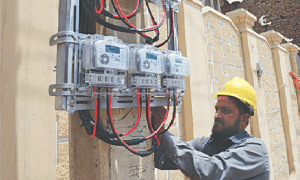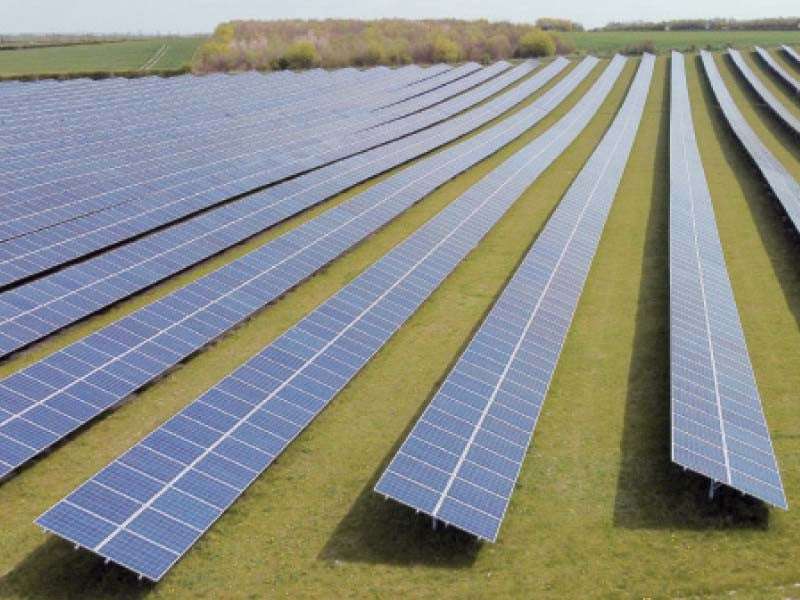Introduction: A Reversal in Power Consumption Decline
ISLAMABAD: For the fourth consecutive month, power consumption in Pakistan has shown a positive upward trend, reversing the declining pattern seen in previous months. Public sector power companies have recently requested a negative fuel cost adjustment (FCA) of Rs1.016 per unit in electricity bills for consumers. This adjustment would result in an estimated Rs10 billion refund to the consumers who were overcharged in October 2024. The development follows a pattern established over the last few months, where FCA adjustments were in favor of consumers.
The Role of Fuel Allowances and FCA Adjustments
The proposal for a negative FCA stems from the substantial fuel allowances granted by the National Electric Power Regulatory Authority (Nepra) following a 20% increase in the base tariff, which took effect from July 2024 until June 2025. This tariff hike has contributed significantly to a reduction in power generation costs, making it the fourth consecutive month of negative FCA adjustments.
Domestic Fuel Sources Dominate Power Generation
October saw domestic fuel sources accounting for 71% of the total electricity supply. Remarkably, nearly half of this energy was generated at zero fuel cost. This shift toward domestically sourced power has played a pivotal role in driving down fuel costs and allowing power companies to propose the negative FCA.
Increased Power Consumption: The Weather Factor
One of the key factors contributing to the rise in power consumption is the delayed onset of winter. Power consumption surged by 8% year-on-year, with total consumption reaching 9.98 billion units (GWh) in October, compared to 9.25 billion units in the same month of the previous year. The delayed arrival of colder temperatures meant that demand for electricity remained high, particularly in the domestic sector, where heating and lighting needs typically increase.
Reduction in Fuel Costs: A Positive Outcome for Consumers
Another significant feature of the proposal is a 19% reduction in fuel costs in October 2024 compared to the same month in 2023. The lower fuel cost is largely attributed to the higher base tariff for the current fiscal year. The power companies reported that the average fuel cost for October stood at Rs9.25 per unit, a decrease from Rs11.43 per unit in the same month last year. This is one of the main reasons for the proposed negative FCA.
Nepra’s Review and the Expected Refunds
Nepra is scheduled to hold a public hearing on November 26, 2024, to review the Central Power Purchasing Agency (CPPA) proposal, which requests a decrease of Rs1.016 per unit from the reference fuel charge of Rs10.2752 per unit. This decrease would be reflected in consumer bills for electricity consumed in October 2024.
Breakdown of Power Generation Costs
In its petition, CPPA, acting as a commercial agent for distribution companies, detailed that approximately 10,262 GWh of electricity was generated at an estimated fuel cost of Rs93 billion (Rs9.059 per unit) in October. However, the amount delivered to distribution companies (Discos) was 9,981 GWh at a cost of Rs92.4 billion (Rs9.26 per unit).
Power Supply Composition in October
- Hydroelectric Power: Hydropower accounted for 31% of the total power supply, remaining largely unaffected by fluctuations in fuel costs as it is produced at zero cost.
- LNG-based Power Generation: LNG contributed 19.5% to the grid, with its cost at Rs22.64 per unit.
- Coal-based Power Generation: Local coal made up 14.8% of the power supply, while imported coal accounted for 8.8%. The cost of electricity generated using local coal stood at Rs11.18 per unit.
- Nuclear Power: Nuclear energy contributed 14.05% to the grid, with a minimal cost of Rs1.51 per unit.
Electricity Generation from Renewable Sources
Renewable sources contributed 3.3% of the total grid supply in October, including:
- Wind and Solar Power: Both of these sources provided energy at zero fuel cost.
- Bagasse-Based Power: Bagasse generation cost returned to Rs5.85 per unit in October, down from Rs12.48 per unit in September.
The contribution from renewable sources remains a significant part of the power supply mix, with wind and solar leading the way in zero-cost generation.
Imported Electricity
Electricity imported from Iran contributed just 0.4% of the total power supply in October, at a cost of Rs25.33 per unit.
Tariff Mechanism and Consumer Impact
Under Pakistan’s current tariff mechanism, fluctuations in fuel costs are directly passed on to consumers through the FCA. This means that the negative FCA proposed for October will be adjusted in consumer bills for December 2024. Additionally, quarterly adjustments, which cover power purchase prices, capacity charges, and system losses, are incorporated into the base tariff by the federal government.
The Future of FCA and Power Tariffs
This trend of negative FCAs reflects a broader strategy aimed at ensuring that power generation remains affordable for consumers, even as the country faces challenges in managing fuel costs. The continuous changes in power tariffs and adjustments based on fuel costs emphasize the need for transparency and accountability in electricity pricing.
FAQs
1. What is the negative fuel cost adjustment (FCA)?
- The FCA is a mechanism used to adjust electricity prices based on fluctuations in fuel costs. A negative FCA, like the one being proposed, indicates that consumers will receive a refund for overcharges due to the lower fuel costs in a given month.
2. Why is there a refund for October’s electricity bills?
- The refund is being provided because power companies overcharged consumers based on anticipated fuel costs. Due to a decrease in fuel prices and an increase in power generation from low-cost sources like hydro and domestic coal, the overcharge can now be refunded.
3. How does the fuel cost adjustment (FCA) impact electricity prices?
- The FCA directly impacts consumers by either increasing or decreasing their monthly electricity bills based on changes in fuel prices. Positive FCA results in higher bills, while negative FCA provides refunds to consumers.
4. When will the refunds be applied to consumer bills?
- The refunds from the negative FCA will be applied to electricity bills in December 2024, reflecting the power consumption of October 2024.
5. How much is the expected refund for consumers?
- The total expected refund for consumers amounts to around Rs10 billion, resulting from the negative FCA of Rs1.016 per unit.
MUST READ:



